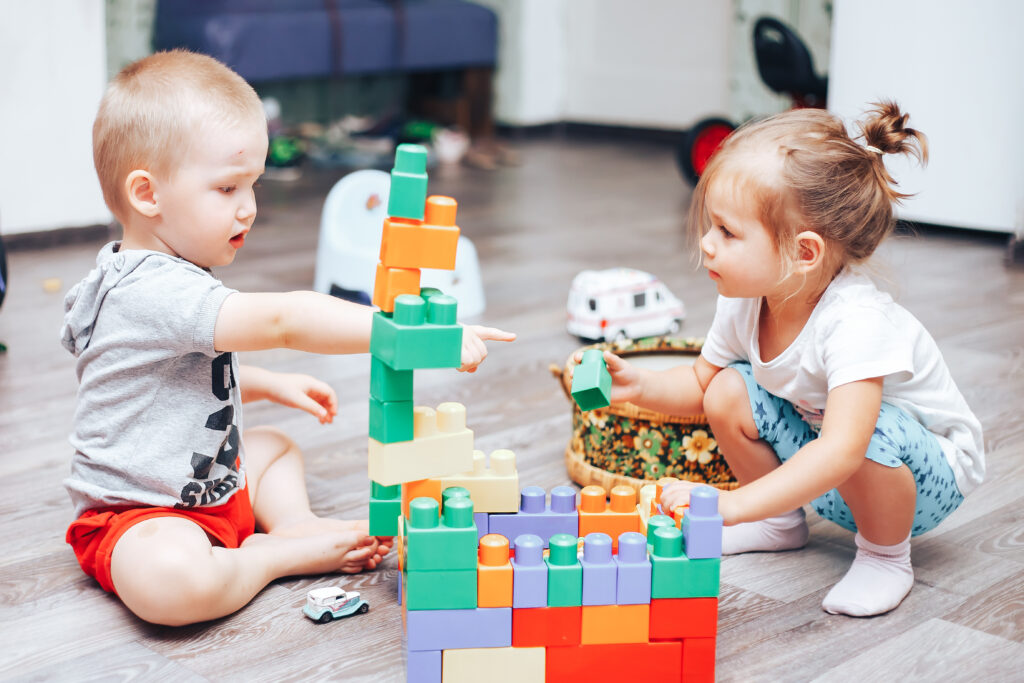Developmental Stages of Play

As a parent or caregiver, it’s important to understand the different developmental stages of play in children ages 0-5. Play is not just a fun activity for children, but it’s also a crucial part of their development. Through play, children learn about the world around them, develop their social skills, and build their cognitive abilities. In this article, we’ll explore the different stages of play in children. We will also talk about what you can do to support their development.
First Developmental Stage of Play
The first stage of play is solitary play, which typically occurs in infants and young toddlers. During this stage, children play alone and do not show interest in interacting with others. They may engage in activities such as exploring toys, touching objects, and making sounds. As a caregiver, it’s important to provide a safe and stimulating environment for your child to explore during this stage.
Second Stage
The second stage of play is parallel play, which typically occurs in toddlers. During this stage, children play alongside each other but do not interact with one another. They may engage in similar activities, such as building with blocks or playing with dolls. As a caregiver, you can encourage parallel play by providing your child with toys and activities that they can engage in alongside other children.
Third Stage
The third stage of play is associative play, which typically occurs in preschoolers. During this stage, children begin to interact with each other and share toys and materials. They may engage in activities such as pretend play, playing dress-up, or building a fort together. As a caregiver, you can support associative play by providing opportunities for your child to play with other children and encouraging them to share and take turns.
Final Developmental Stage of Play
The fourth and final stage of play is cooperative play, which typically occurs in older preschoolers and early elementary school-aged children. During this stage, children work together to achieve a common goal, such as building a tower or playing a game. They may engage in more complex activities that require cooperation and communication. As a caregiver, you can support cooperative play by providing opportunities for your child to work with others. Encourage them to communicate and problem-solve together.
In conclusion, understanding the different developmental stages of play in children ages 0 to 5 is crucial for supporting their development. By providing a safe and stimulating environment, encouraging parallel play, supporting associative play, and promoting cooperative play, you can help your child build their social, cognitive, and emotional skills. Remember to be patient and supportive as your child navigates these different stages of play. Enjoy watching them grow and learn through play.
